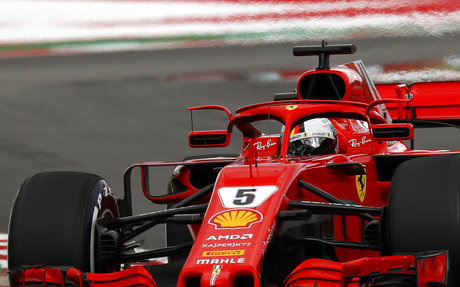
Hurricane Irma hit Florida last year as a Category Four hurricane and caused billions of dollars worth of damage in South Florida.
But the Miami City Commission last month voted to bring “Hurricane Formula One” to the streets of Miami every year for the next ten years.
Miami’s city manager is now negotiating with Formula One on terms to bring the race to Miami. But there are lingering questions of who is paying for this storm of sound and expense that’s bearing down on the city.
Miami Mayor Francis Suarez has spearheaded efforts to secure the race. In comments to Florida Politics, Mayor Suarez said “Miami is a world-class, global city and Formula One is a world-renowned, global event. Naturally, joining forces is something that would be highly exciting for both our city and the racing world.”
Suarez sees the event as a revenue magnet. “Formula One has the potential of making an enormous impact on our economy and elevate our standing on the world stage of sports and entertainment. This event would attract tourists, race enthusiasts, visitors, and media outlets from all over the world to Miami, creating incredible excitement and opportunity.”
But not everyone is as optimistic. In November, the Miami Herald quoted Miami’s film and culture administrator, Vicente Betancourt, stating Miami had no money to pay for the Formula One race.
“I was very blunt with [Formula One] and said we’d love to entertain it, but we have no money,” Betancourt told the Miami Herald. Still, the commission voted to join Miami Dolphins’ owner Stephen Ross in bringing the race to the streets of Miami.
That decision could be costly.
Concrete barriers
The race route will require regulation one-meter-tall energy-absorbing concrete safety barriers on either side of the track, for the entire length of the track. It will take several weeks to put the barriers in place and take them down after the race, so those roads will be out of commission for periods before and after the race, not just during the race.
The City has also proposed an October race, which will be during hurricane season. Hurricane Wilma hit Florida during October and, in fact, more than 30 hurricanes have hit the state in October. If there is flooding while the concrete barriers are up, emergency services could face increased difficulty navigating those streets.
Road resurfacing to FIA race regulation standard
Formula One races aren’t just run on existing streets.
Formula One events require a technical surface known as “Grade 1 homologation.” This is a driver safety standard and is set by the Federation Internationale De L’ Automobile (FIA), the governing body of Formula One.
Between safety barriers and resurfacing the streets to FIA regulations, Miami is looking at something in the range of $50-$60 million each year just for setting up the track itself and grandstands. And those expenses tend to increase annually.
The Grade 1 surface is about one-foot thick and is nonporous. During peak hurricane season, and with concrete barriers in place, that could complicate the issue of water runoff.
Moreover, Formula One cars create so much force and suction that all utility hole covers on the route will likely have to be welded shut. So during emergencies, access to underground utilities, sewage, water or gas lines could be compromised.
According to FIA regulations, the roads must be resurfaced annually before each race. Every time. No exception. That’s likely at least $500 million over ten years in downtown road resurfacing. It will take several weeks to resurface the streets each time. That’s time and money spent on a race and not on other neighborhoods in need of resurfaced roads.
Race Week: extreme noise during workdays for several days
The Formula One Race is not just one race on Sunday. Races start as soon as the Thursday prior at 8 a.m. and go six to eight hours every day through Sunday.
That includes race qualifiers for starting position, as well as races from the Porsche series, Ferrari series, classic Formula One series, and other races beyond the main event. It’s nonstop racing for three to four days. Each of these races produces jet-engine level sound decibels, and it will take place throughout the day during weekday work days.
This is a problem that even Suarez acknowledges.
“With the attention and activity that an event of this caliber would inevitably attract, we understand that it can present some unique challenges for our residents as well. We are aware of these concerns, specifically related to noise and traffic, and are committed to addressing them as we move forward before we finalize this agreement.”
How those issues will be addressed is still very much up for debate.
Bottom line: If Miami really wants to have Formula One racing through its busy streets, residents better be prepared to pony up serious cash, deal with periods of closed roads and pray a storm doesn’t hit during those weeks.
Otherwise, Miami leaders may be dealing with backlash similar to the Marlins stadium debacle.
